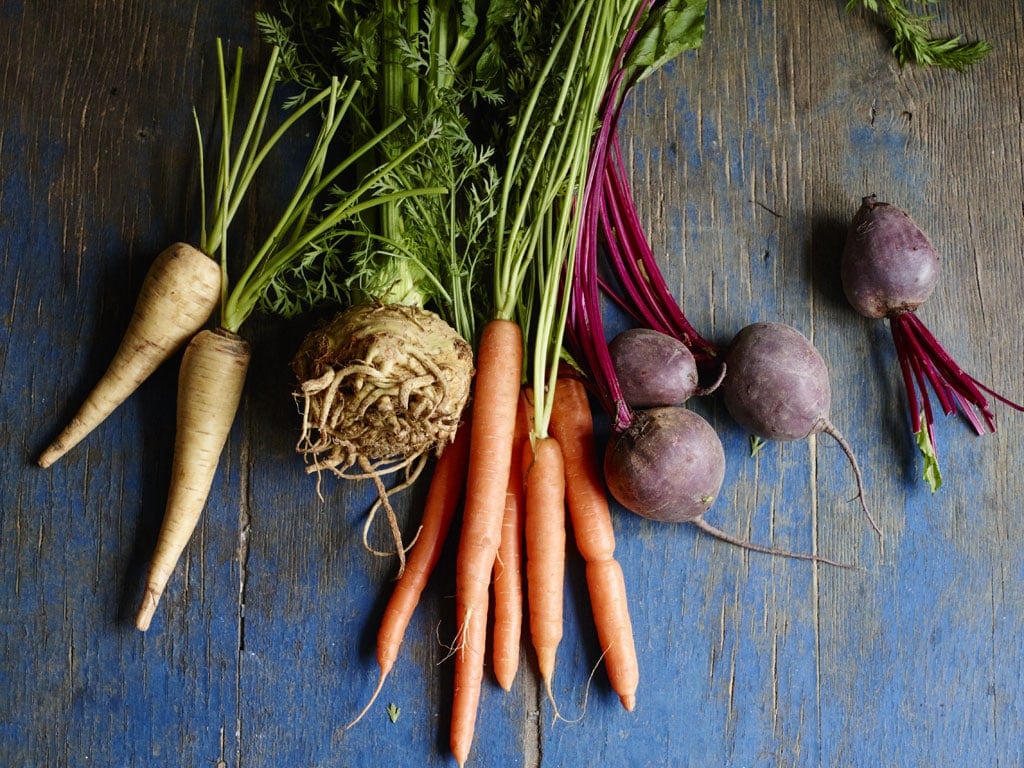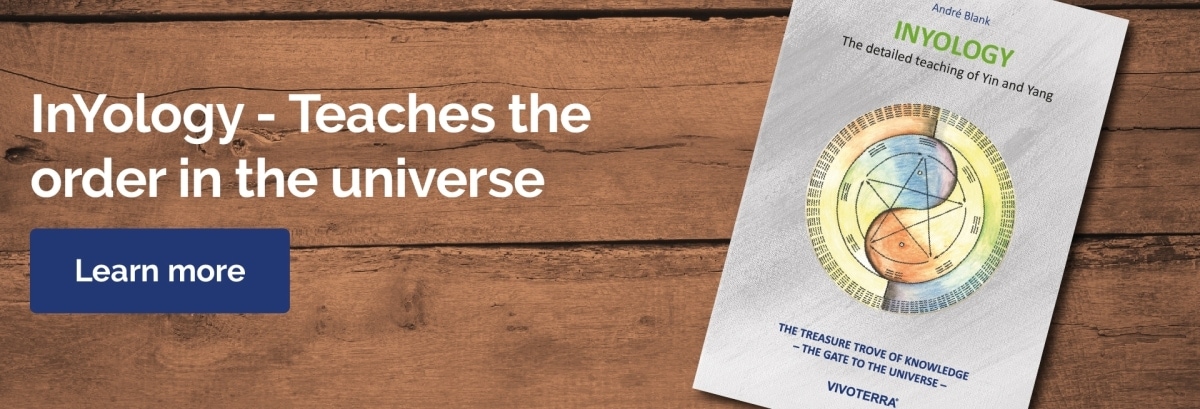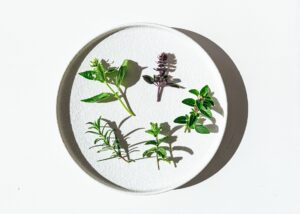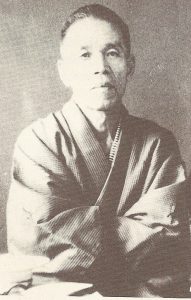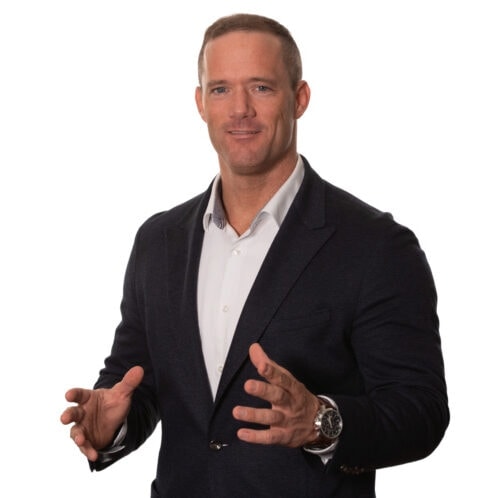Macrobiotics translated from ancient Greek means great life. The macrobiotic diet is based on the common sense inherent in humans and on an intuitive understanding of the relationship between the environment and human life. It is also based on a perception of balance and dynamic harmony between the opposing and complementary factors Yin and Yang . The macrobiotic diet has been experienced and tested by billions of people over millions of generations – except for modern times – in most parts of the world, whether under the name “macrobiotic” or some other traditional name.
What is macrobiotic?
Macrobiotics are fundamental to the way one eats and drinks in Buddhist monasteries. That is why it is called “Shokuyo-Do”. This is a cooking style that improves the highest judgment. Philosophy is based on psychology. What we eat today in the Chinese and Japanese restaurants, which are considered very “chic” in New York, only appeals to our lower sensory judgment and completely obscures our higher judgment. But the real masters of Chinese and Japanese culinary arts can prepare foods for us that are not only delicious, but also bring happiness and health, in accordance with macrobiotic principles.
Macrobiotics is not an empirical folk medicine, nor a spiritual, religious, mystical, or so-called scientific, symptomatic, and palliative medicine. It is the biological and physiological use of Eastern philosophy and medicine.
The macrobiotic diet is the biological and physiological use of a dialectical concept of the infinite universe. This term is 5000 years old and shows the path to happiness through health. The path from health to happiness must be open to everyone, the rich and the poor, the clever and the ignorant. It has to be practical and also theoretical. Any theory, scientific, religious or philosophical, is pointless if it is too difficult and not practically applicable. All art, practice and technology are dangerous if they do not have a solid theoretical basis.
Macrobiotics are very easy to use.
Anyone can acquire it in their everyday life, anywhere and at any time, if they really want to be free from all physiological and mental difficulties.
Millions and millions have found happiness, freedom, culture and peace in the Far East for thousands of years thanks to the macrobiotic teachings of a Lao-tse, Song-tse, Confucius, Buddha, Mahavira, Nagarjuna, etc., and many Shintoists, and long before them of the sages who created the great medical science of India.
Today all these teachings have been forgotten. Everything that has a beginning has an end. They have all been mixed up with superstition, mysticism, and professional gambling. That is why I want to bring you a new interpretation of the macrobiotic way of life. You have to adhere to them if you want to understand a philosophy of the East. The ancient Greeks also knew that a healthy and clear mind cannot be in a tense and disturbed body.
Say Ishizuka and the Shoku-Yo movement
Dr. Say Ishizuka lived from 1850 to 1910 and was a Western-trained doctor in the Japanese army. He had been weak since birth and suffered from kidney and skin diseases. In order to restore his health, he thoroughly studied Western and Eastern medicine. The movement he founded in 1907. was originally called Shokuyo (food healing).
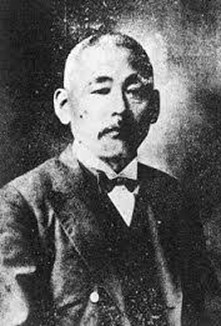
Ishizuka’s theory is based on a few simple concepts:
As the most important basic rule, he determined that food is the most important factor for a healthy life for people (people are converted food).
As a second basic rule, he found that human health and longevity depend on the correct balance between the salts potassium and sodium in the body.
The Far Eastern versus the Western nutritionists
While Western nutritionists (then and still today) emphasize the importance of protein and carbohydrates, Ishizuka insisted that minerals, especially potassium and sodium, are the most important. It is the relationship between them that gives the body the ability to use the other nutrients properly. The healthy functioning of the entire human organism depends on this correct relationship.
Other factors such as geography and climate, physical activity, etc., also have an important influence. But most importantly, the correct ratio of potassium to sodium that people ingest with food.
Health and sickness
Furthermore, health and illness depend crucially on the correct ratio in daily food, the amount of the individual foods in relation to one another. (see more in the chapter: 5-QI-Transformations).
A really healthy person will not get sick, even if they come into contact with pathogens , as long as the diet has the right proportions of potassium and sodium.
Western medicine, on the other hand, still looks for the causes of diseases in microorganisms such as viruses and bacteria.
The teaching of Dr. med. Say Ishizuka
The teaching of Dr. Saying Ishizukas was published in Japanese in 1897:
“A Long Life Chemical Nutrition Theory.” Unfortunately, it was never translated into Western languages, so Western medicine had no access to the scientific experiments that Ishizuka conducted (in his own body as well as in his laboratory).
Ishizuka recommended the traditional Japanese diet, with whole unrefined (unrefined) foods, with very little or no milk, with very little or no animal products.
He healed a large number of patients simply by following his traditional diet.
Georges Ohsawa
The successor of Dr. med. Say Ishizuka was Yukikazu “Nyoiti” Sakurazawa. Yukikazu (Nyoiti Musagendo) Sakurazawa (George Ohsawa was later his pseudonym in Europe) was one of the greatest masters and benefactors of our time. Unfortunately only very few people really understand it because of its teaching (just like Jesus’) is a concentrate and almost nobody bothered to dissolve that concentrate deep enough.
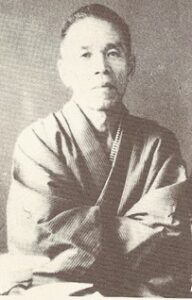
In particular, his teachings include:
-
Before anything else and at all costs, study the Only Law – the order of the universe.
-
Food is the basis of life, the nature of happiness and health or disease.
-
Sodium and potassium are the main opposing and complementary elements in food. They have the greatest influence on the “Yin / Yang” quality in the organism. The food must be balanced in its content, especially with potassium and sodium.
-
The food should be whole (unrefined) and natural.
-
The food is best when it comes from the region where the person lives.
-
To do this, study thoroughly and deeply the extensive teaching of George Ohsawa (and also that of his Uchi-Deshi), which is the basis for this book. George Ohsawa later summarized his teaching under the term “Zen Macrobiotics”.
-
Before Ohsawa began his extensive writing, there were few books in Japan on diet and health.
-
Very few people have really understood all of George Ohsawa’s teaching in depth. Many of his followers (including his opponents) have unfortunately only superficially studied and understood his teaching, and have only filtered out those parts of his teaching that they believed to be of importance (or useful for their purposes) and have nevertheless pretended to be masters of macrobiotics.
-
As a result, you have reduced macrobiotics to the “golden calf of vegetarians or” chörnlipicker “. Unfortunately, many of these supporters have brought macrobiotics into disrepute due to their sometimes extreme, arrogant, arrogant and self-righteous way of life. Many of these “macrobiotic vegetarians” often behave like self-righteous eco-terrorists.
-
(Kind of understandable that macrobiotics are rejected by a lot of people).
-
Although physical nourishment (food and drink) is very important, it should not become the sole content of life and thought. Keeping the body healthy is the basis of human health, but spiritual nourishment (mental and social concerns) should not be neglected either. Our body also reacts to “food” in the form of experiences, relationships, the environment, etc. Mind and body are just different manifestations of one and the same universe, and form a unit.
There are different ways to influence our health; eg the path through nutrition (Shokuyodo), or the path through the spirit (Zendo).
We can largely choose the food ourselves and therefore it is the easiest and easiest way to bring about change.
On the spiritual level, zazen is the most direct but the hardest way.
I encourage you to find out more about macrobiotics and Sendo.
Macrobiotics according to Kushi
Michio Kushi was born in Japan in 1926. He studied literature and philosophy, English, French, and German at the university. He was interested in poetry, novels, plays, and the Asian arts. Later he was mainly interested in the natural sciences and mathematics.
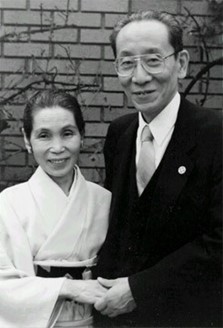
Excursus on the macrobiotic pioneer MITOKU
Here is a short excursus, which only insiders know – into the history of natural food from Japan: The macrobiotic products distributor MITOKU from Japan takes its name from Michio and Aveline Kushi. Aveline Kushi was single: Tomoko Yokoyama. The founders of MITOKU Akiyoshi Kazama (1930-2012) and Michio Kushi (1926-2014) invented the name as follows: MI = Michio, TO = Tomoko, KU = Kushi. so both first names of Michio and Tomoko and Kushi. This is how the name MITOKU came about. Her new name Aveline – Tomoko Yokoyama was given by Master Ohsawa. When he sent his students out into the world to teach macrobiotics – he gave them new names.
Back then, life was ruled by the turmoil of war. As a result, education was primarily geared towards developing self-discipline. In addition, he was taught martial arts at school. In college he lived with six hundred students. Gradually, the students were drawn into the war. His older fellow students said to him at the time: “You are young, above all you work for world peace”. Many were killed, but he did not forget his parting words.
The second World War
In April 1945 he began to study political science. When he had to do military service and go to war, he had many experiences that led him to work for world peace in the future. Many of his friends and relatives died in the war. He then thought a lot about the meaning of death. His main interest was peace and the future of humanity. But these subjects were not part of the usual university curriculum. He started more and more to realize his own plans. As he often did before, he visited the old shrines and temples, and meditated and prayed there. His mind searched for a practical solution to build lasting world peace. He spoke to many eminent scientists and scholars about his ideas. But nobody seemed to really understand him. He searched and searched.
Michio Kushi studied macrobiotics from now on. He became Georg Ohsawa’s best student (Uchi-deshi). In 1949 Georg Ohsawa sent him away and said he should now go to America to teach macrobiotics there. Michio Kushi became the most important macrobiotics teacher in the world. Michio Kushi himself has published many books on the entire spectrum of macrobiotics.
Michio Kushi once said of Georg Ohsawa: “This man has an indescribably great knowledge of Yin and Yang. When we met in Japan, I was never actually able to understand what he was saying. I respected his courage and his enthusiasm for peace, but I found some of his actions foolhardy. In 1944, towards the end of the Second World War, he undertook a one-man peace march through Manchuria with the aim of reaching Moscow and persuading Stalin to mediate between the world powers. During the winter he was arrested in Manchuria, which was probably best, because the tundra towards Siberia was frozen and it was forty degrees below zero. In addition, he had never sat on a horse before. He was sent to prison and severely tortured for his diatribes against the military government. He survived only thanks to the bravery and energy of his wife Lima, who brought him rice balls to jail every day and provided him with essentials. Shortly before the scheduled execution date, the war was over, and the Americans liberated him. Ohsawa never complained about his troubles. He had faith in the absolute justice of the order of the universe. He always claimed that if you ate right, you would intuitively be in the right place at the right time. I wasn’t so sure about that.
It is only after many years of intensive study that someone is even able to grasp the full depth and vast knowledge of George Ohsawa and perhaps even understand it …
The macrobiotic diet
What is the right way of life? How shall we live?
To do this, we should study and follow the advice of the wise masters:
-
Jesus taught us: “Whoever finds the explanation of these words will not taste death.”
-
He said: “He who searches should search until he finds, and when he finds he will be shaken. And when he has been shaken, he will be amazed and will rule over the universe.”
-
He said: “If those who lead (or seduce) you say to you, see the kingdom is in heaven, the birds in heaven will come before you. If they tell you that it is in the sea, the fish will come before you. But the kingdom is in you and it is outside of you. When you know you will be known and you will know that you are the sons (daughters) of the living Father (the Great Spirit).”
-
“Know what is before your face, and what is hidden from you will be revealed to you. Because there is nothing hidden that would not be revealed.” (An indication of the universal order.)
-
Jesus went on to say: “Do not lie and do nothing that you hate, for there is nothing hidden that remains unexplored.” (see also the chapter on Bo-Shin)
-
Since ancient times, the wise people in nature have observed how food affects people. From these experiences they have built up and passed on their teachings. (Practice and theory)
-
Traditionally, in the Zen temples (where the martial arts were traditionally also practiced), great attention was paid to a natural diet that exactly complied with the guidelines of macrobiotics. A note should underline the importance and value of nutrition in the monasteries and temples: In the strict hierarchy, the Tenzo (the master chef) took the highest position or position after the abbot (temple director: master).
Why should you eat a macrobiotic diet?
When we realize that we can become able to heal ourselves, we need to relearn how to heal ourselves; that is our right. It is unnecessary that we depend on others, however qualified they may be. It is an uplifting feeling to realize how free I am by practicing my own healing arts in a simple way.
Oriental medicine has always taught that food is the best medicine.
The Shurai, a 3,000 year old Chinese book, distinguishes five degrees of doctors depending on the type of medicine they practice. The wise man comes first, followed by the nutritionist, the surgeon, the general practitioner, and the veterinarian.
The most respected doctor, the doctor-philosopher, teaches the harmonious order of man and the world. The teachings of the nutrition doctor are classified as preventive medicine, it is called “medicine of long life”. The surgeon uses his specialized knowledge to heal the effects of severe injuries, also using herbs and food as aids to extend the life of his patients. The general practitioner uses herbs and techniques such as acupuncture, moxibustion, and massage to heal specific ailments.
Remedies of Far Eastern medicine
All remedies of Far Eastern medicine work according to the principle of the balance of Yin and Yang. This method, based on a carefully and gradually changing equilibrium, is gentle, safe and persistent.
Modern medicine is mainly concerned with treating symptoms. Every year “new” diseas(es) arise, every year a virus or microbe makes the headlines.
If a microbe like a thief is discovered at the time of illness, it is immediately called a “bacterium” and is believed to be the cause of the illness. The next step is then to get rid of them with medication or surgery.
Oriental medicine approaches the problem completely differently. Nothing is destroyed out of fear, since the elimination of symptoms not only does not help, but even weakens the organism. A person with a healthy way of thinking is not trying to separate himself from the world of bacteria. He knows that viruses and microbes also have their purpose and are beneficial for people. They are not our enemies, they are in what sustains our life – in the food we eat, in the water we drink. And they cannot harm a healthy person.
Yin & Yang in the macrobiotic diet
The macrobiotic diet is low in fat and high in fiber and focuses on whole grains and vegetables. Followers of the macrobiotic diet avoid meat, animal fats such as butter or lard, dairy products, eggs, artificial sweeteners and chemical additives. Your diet consists of whole grain cereals (brown rice, millet, barley, buckwheat, wheat, maize, rye), vegetables, beans, algae (nori, kombu, hiziki) and smaller amounts of fruits, seeds, nuts and white fish. Preferably, these foods are organic, regionally grown and wholesome or only very slightly processed. Nightshade plants such as potatoes, tomatoes, eggplants and peppers are avoided. Food should be prepared according to the macrobiotic diet with utensils made of materials such as wood, glass, enamel or stainless steel. Microwave cooking is also avoided.
Food in the macrobiotic diet
-
Whole grain cereals (whole grain) such as brown rice, millet, buckwheat, barley, ancient wheat, maize, rye
-
Vegetables grown according to the season and regionally
-
Fermented vegetables like sauerkraut and pikles
-
Legumes such as chickpeas, borlotti beans, azu beans, black beans, lentils, tofu products such as tofu and tempeh etc.
-
Seaweed like, nori, kombu, hiziki, arame, wakame, dulse
-
fish and seafood
-
Nuts and seeds
-
Fruit grown according to the season and regionally
-
Sweet things like rice malt, barley malt, xylitol and fruit puree
-
Optional: poultry and red meat
-
Drinks like kukicha and hojicha (fermented green tea) without tea
With a macrobiotic diet, all important minerals, vitamins and vital substances that are essential for health are covered. Anyone who understands macrobiotics well enough – also knows that nowadays we can also use dietary supplements if the situation requires it.
The following foods and fillers are avoided in the macrobiotic diet:
-
Refined sugar (also honey)
-
White flour products (have the same high glycemic index as sugar)
-
Dairy products
-
Fast food
-
Factory-raised meat
-
Fluoride toothpaste (Fluoride is a waste product of the aluminum industry and slowly but continuously switches off human free will.
-
Coffee beans and sweet drinks
One important note: Macrobiotics, or Shokuyodo in Japanese, has been watered down, like all traditional teachings, and misinterpreted by sectarians and extremists, and worse – wrongly taught. As a result, you have reduced macrobiotics to the “golden calf of the vegetarians or grain lipstick”. Many of these supporters have unfortunately brought macrobiotics into disrepute due to their sometimes extreme, arrogant, arrogant and self-righteous way of life. Many of these “macrobiotic raw food vegans” often behave like self-righteous eco-terrorists. Unfortunately, most of these macrobiotics are adherents of socialism, which is nothing more than centralism, and that is nothing more than dictatorship. These people are too yin physically, but far too yang-stubborn in spirit. (Kind of understandable that macrobiotics are rejected by a lot of people.)
If we understand macrobiotics correctly, it is the best form of nutrition. Why? Because macrobiotics teach nutrition according to the laws of nature and thus in harmony with nature. But when the blind lead the blind, both fall into the abyss.
Sources and books
INYOLOGY – The detailed teaching of Yin and Yang
The secrets of health – for body, soul and spirit
The miracle of dietetics
Zen macrobiotics

